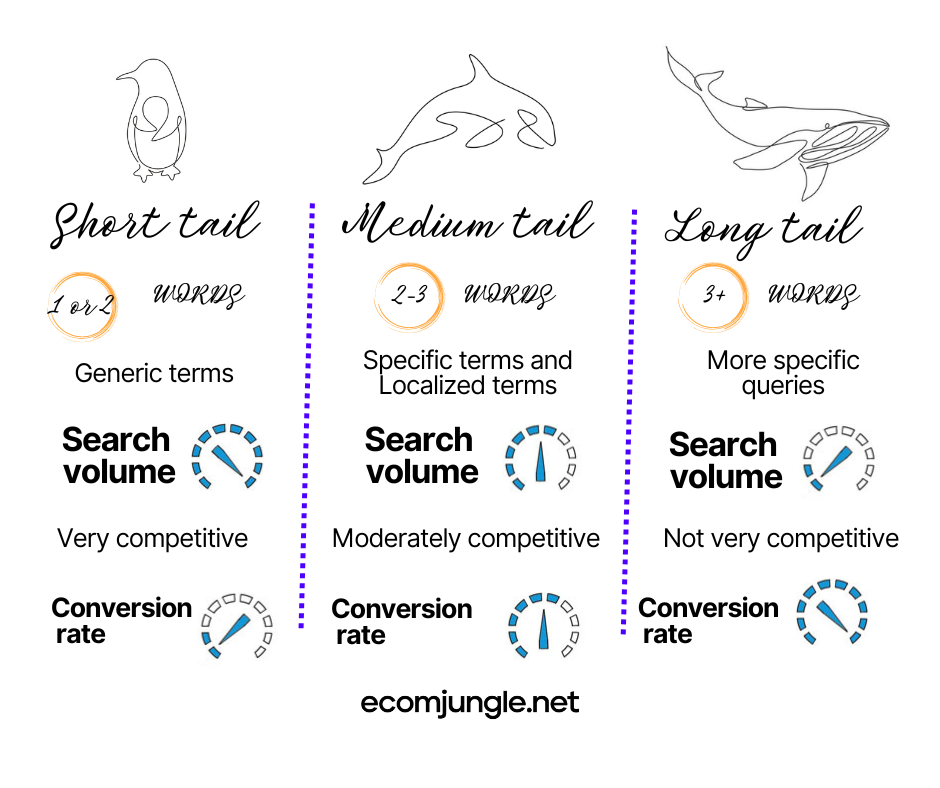Many websites have serious SEO problems because, despite spending tons of money on SEO content, the copy does not have a good balance of long-tail and short-tail keywords. Nowadays, this is one of the main points that SEO strategists consider when planning a website’s SEO strategy and performing keyword research.
As is well known, keywords are an essential part of any search engine optimization (SEO) campaign. However, it is crucial to have a good process of selecting the best keywords for the success of your website.
It is also vital to have a good SEO structure in which short–tail and long-tail words are placed for search engine algorithms to detect the topic of your website more accurately. It is achieved by adding your keywords in the headings, descriptions, and development content.
- What is a short-tail keyword?
- What is a long-tail keyword?
- Which Type of Keyword Is Better?
- Keyword competition and search engine volume
- How to use short-tail and long-tail keywords together?
- How to apply short-tail and long-tail keywords strategically
- If you are a new business don’t be afraid to start with long-tail keywords
- Frequently Asked Questions
- Conclusion
What is a short-tail keyword?
Short-tail keywords are those that consist of 1 to 2 words. They are essential keywords used when performing a general search on any topic.
The keyword research process also starts with finding these words.
For example, a person who wants general information about clocks will enter “clock” in the search engine, and millions of results will appear with all kinds of information about clocks.

A more specific search might be “wall clock”, with narrower results.

The key characteristics of short-tail keywords:
- They are also known as “head terms” and contain one or a maximum of two words in their composition.
- These keywords have a lot of traffic and are best suited to providing general information.
- They are also known as generic keywords and have very high competition.
- The chances of your site or blog appearing among the first results are very low.
- If you want to reach the first places, you need to spend a lot of effort and time, but also a lot of money.
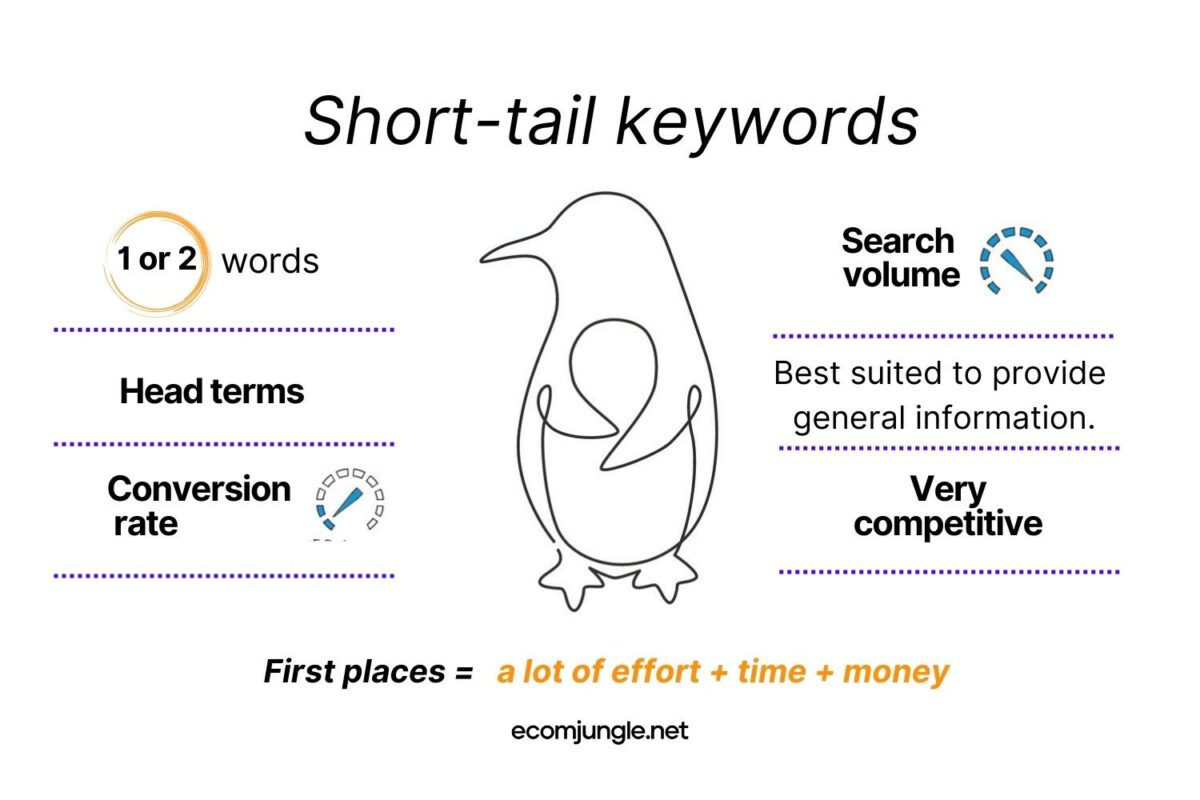
Short-tail keyword pros
- They allow you to target large markets.
- Short-tail keywords will generate higher search volumes because users tend to be more generic in their searches.
- If they are integrated into your website’s structured data, they will rank better in search results.
- Helping you define the content that will guide the user through the sales funnel.
- They are ideal for indicating to search engines what category and topic the content is about.
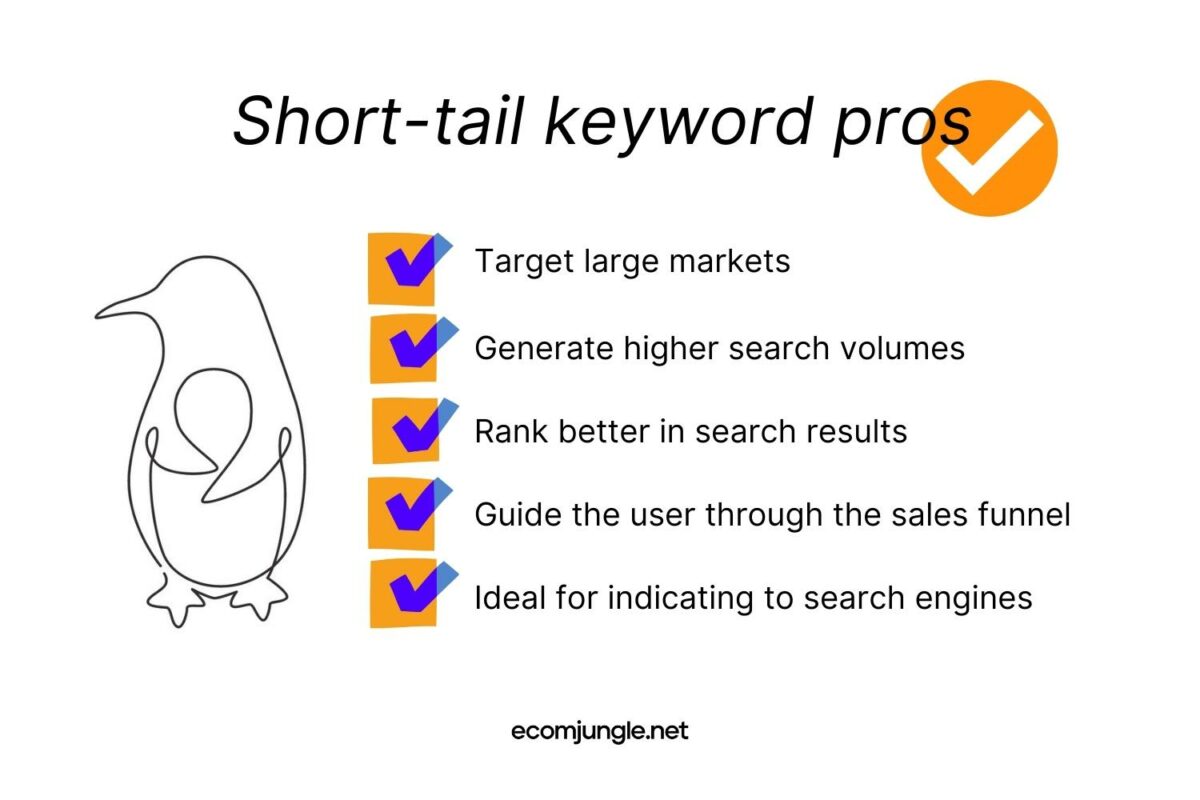
Disadvantages of short-tail keywords
- They are highly competitive, as they are specific and single-word.
- It is challenging to determine the clear search intent of short keywords.
- A short-tail keyword is vague, and users need to read descriptions to understand what the website is about.
- Short-tail keywords are less relevant to reaching your audience.
- Short-tail keywords offer a worse conversion rate because it is more difficult to offer products and services that match the user’s search.
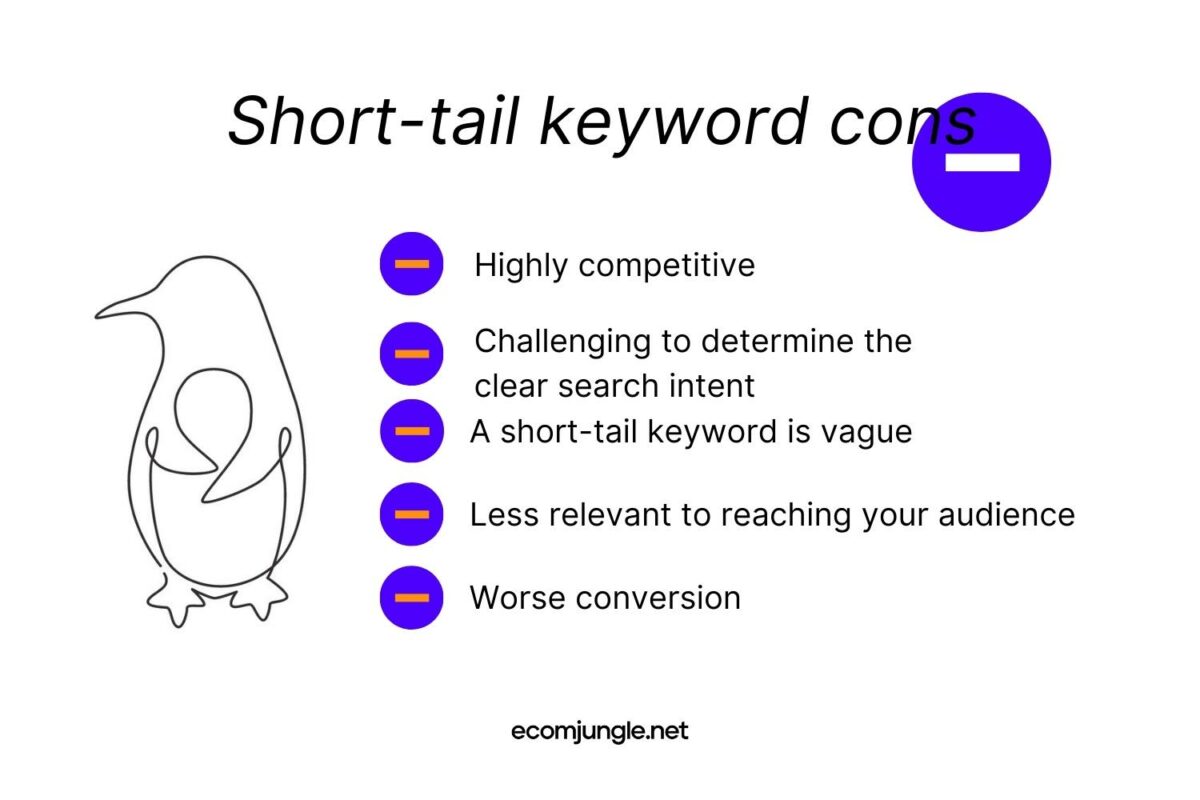
What is a long-tail keyword?
Long-tail keywords consist of terms with three or more words. They are keywords that seek greater focus and detail.
Likewise, when using a long-tail keyword, what you are looking for is to answer a specific question.
For example, continuing with the sample of clocks, someone will place in the search engine rankings “wooden wall clock in the New York” if the person is interested in finding out where to buy this product.

The key characteristics of long-tail keywords:
- They are in charge of further filtering searches by making them more specific.
- Searches are more effective since the user requires immediate and precise answers to their needs.
- Those who enter your website will have a much more defined purchase intent than those who search for generic keywords.
- They increase the chances of your website appearing in featured snippets.
- They help you optimize semantic, conversational, and voice search.
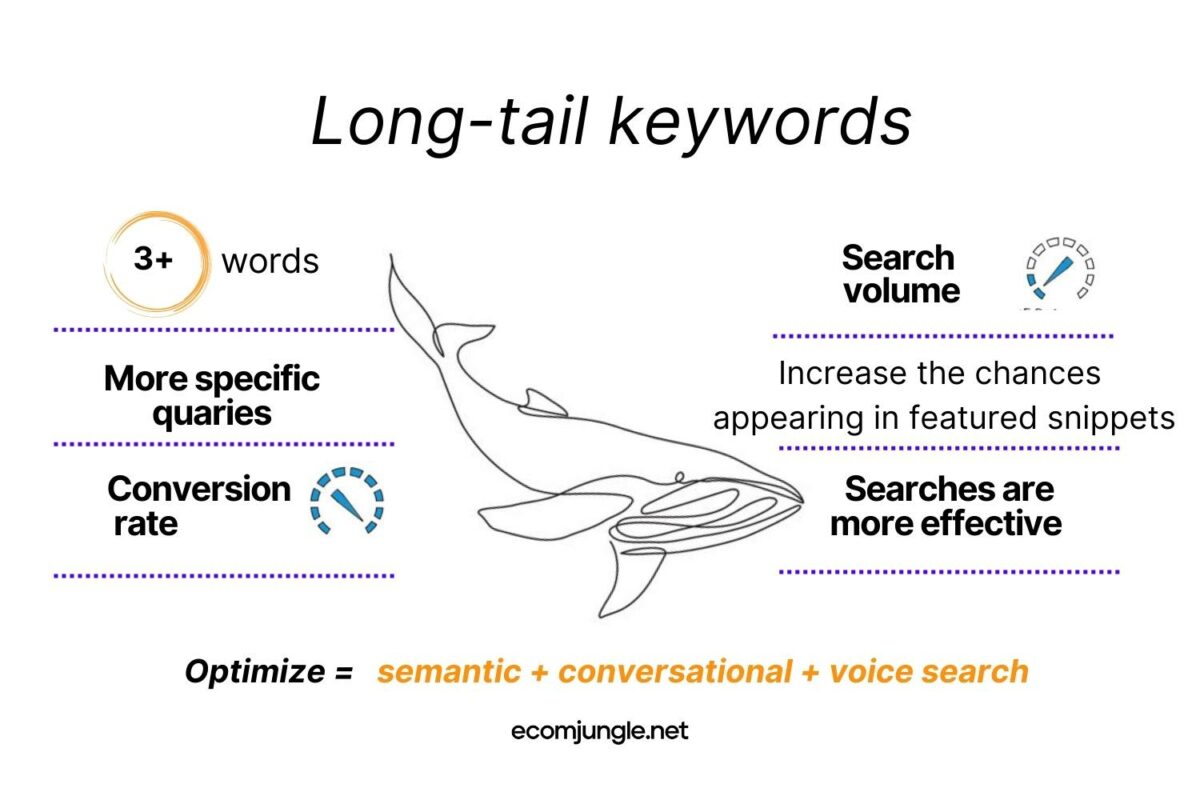
Long-tail keyword pros
- Your products will be better positioned as long as it is unique products or services in the market.
- Chances of getting higher quality customers, a long-tail keyword will come directly to look for what your blog has.
- With a long-tail keyword, the competition is less, if your reputation is high you can achieve better results than the competition you have.
- Users who come to your website will do so precisely because they want to know about the subject you deal with.
- You will be much more visible to those users with a specific need and have the answer.
- By catering to the user’s search intent, your chances of converting them into buyers are higher.
- You can target a specific area
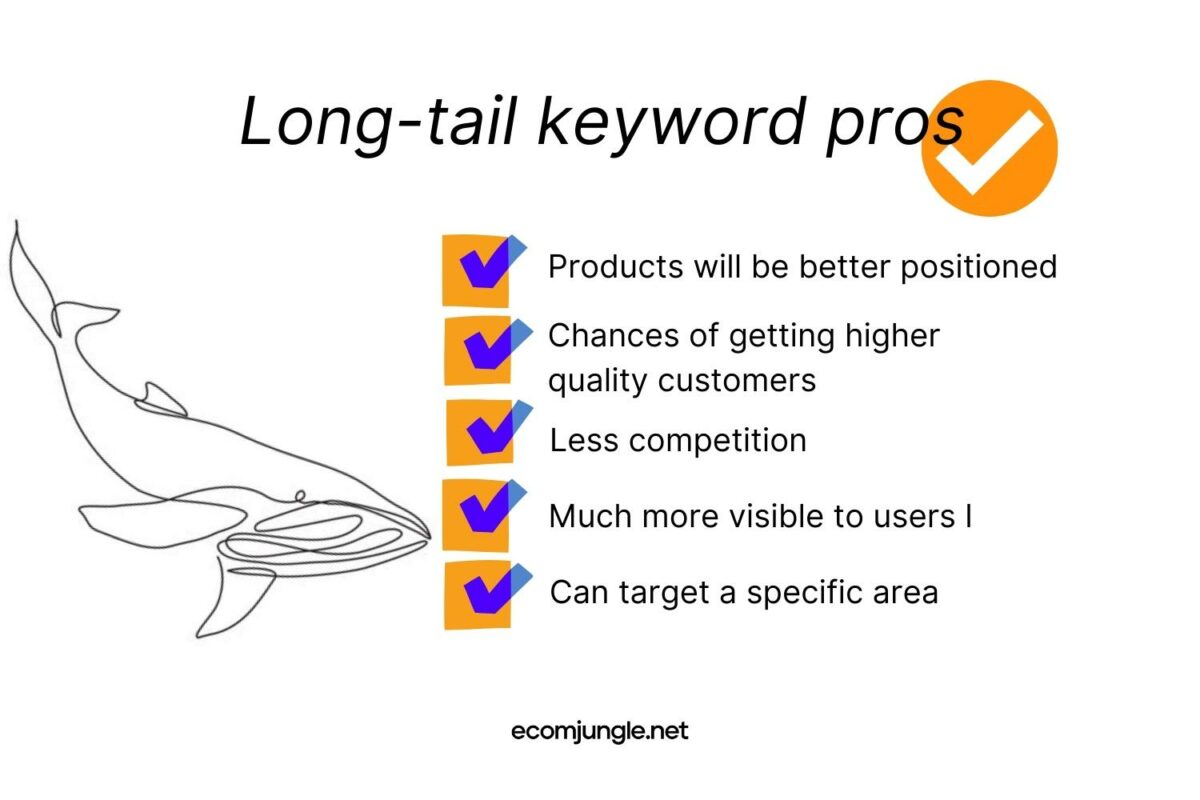
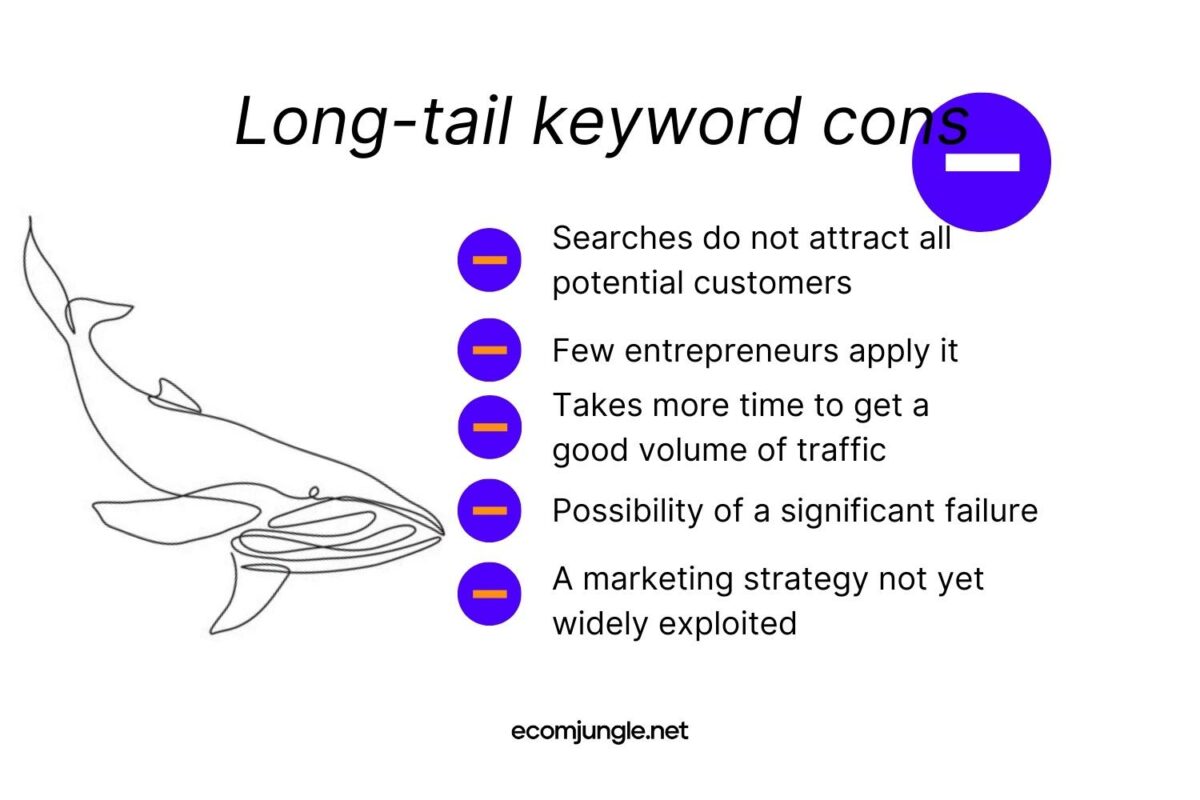
Which Type of Keyword Is Better?
Long-tail keywords are usually targeted. Because long-tail keywords address a specific user intention, you can generate relevant content for users at each step customer journey.
Therefore, matching long-tail keywords to target user intention boosts the potential for conversions.
In addition, due to the low competition, long-tail keywords provide a higher chance of return on investment (ROI).
Whereas short-tail keywords are advantageous coming from a broad lead traffic generation outlook, long-tail keywords allow you the opportunity to engage with your customers on a deeper, more emotional level.
You will have to understand how to use both if you plan to keep one up on Google.
Keyword competition and search engine volume
Keyword search volume tells you how many times a particular keyword has been searched for a given period. SEO marketers will look at the average keyword search volume over predefined periods to determine its popularity and competitiveness.
This information guides their strategy by indicating which keywords are likely to attract the most interest and generate the most traffic.
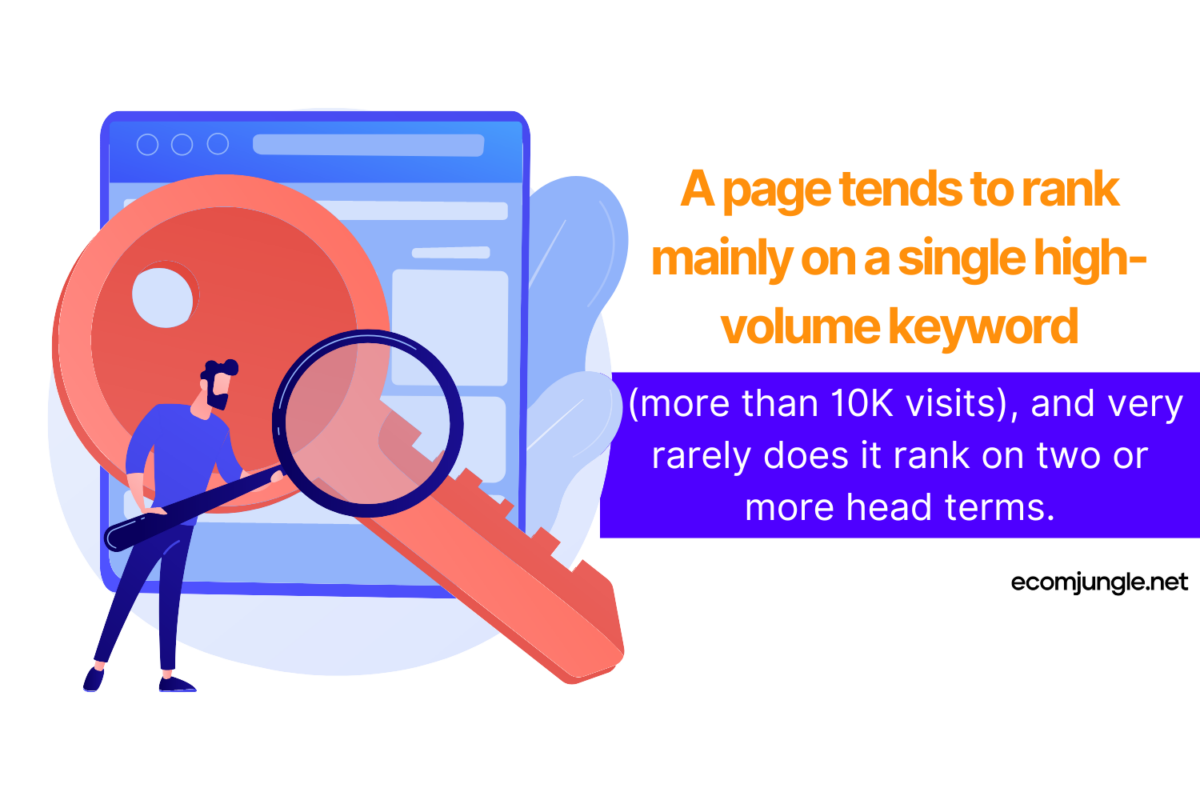
According to a study conducted by Ahrefs, a (more than 10K visits), and very rarely does it rank on two or more head terms.
Moreover, we must pay attention to the competition because if there is high competition in the selected keyword, it will be more difficult to position at the top of the search engines. So, increased competition reduces our position; often, due to a lack of knowledge, people who start working with their positioning strategy look for the most used keywords in their industry. Unfortunately, it ends up being a grave mistake because they can face the biggest companies in the market, and it isn’t easy to compete with them. Therefore, the best thing you can do is to learn how you can find low-competition keywords that can also position you in the top search results.
How to use short-tail and long-tail keywords together?
Short-tail keywords have extremely high competition. If your website is just getting started in Google search, it will hardly beat the titans of the first three pages of results. It has also been proven that short-tail keywords attract a large audience but generate fewer conversions than long-tail.
Taking advantage of the long-tail is the key for your eCommerce website to make space in Google’s results at the early stage when starting to build online business. Being a low competition, you can rank for many more terms and appear for other searches. And in addition, since they are considered transactional, there is a greater chance of successful closings. And that is our goal.
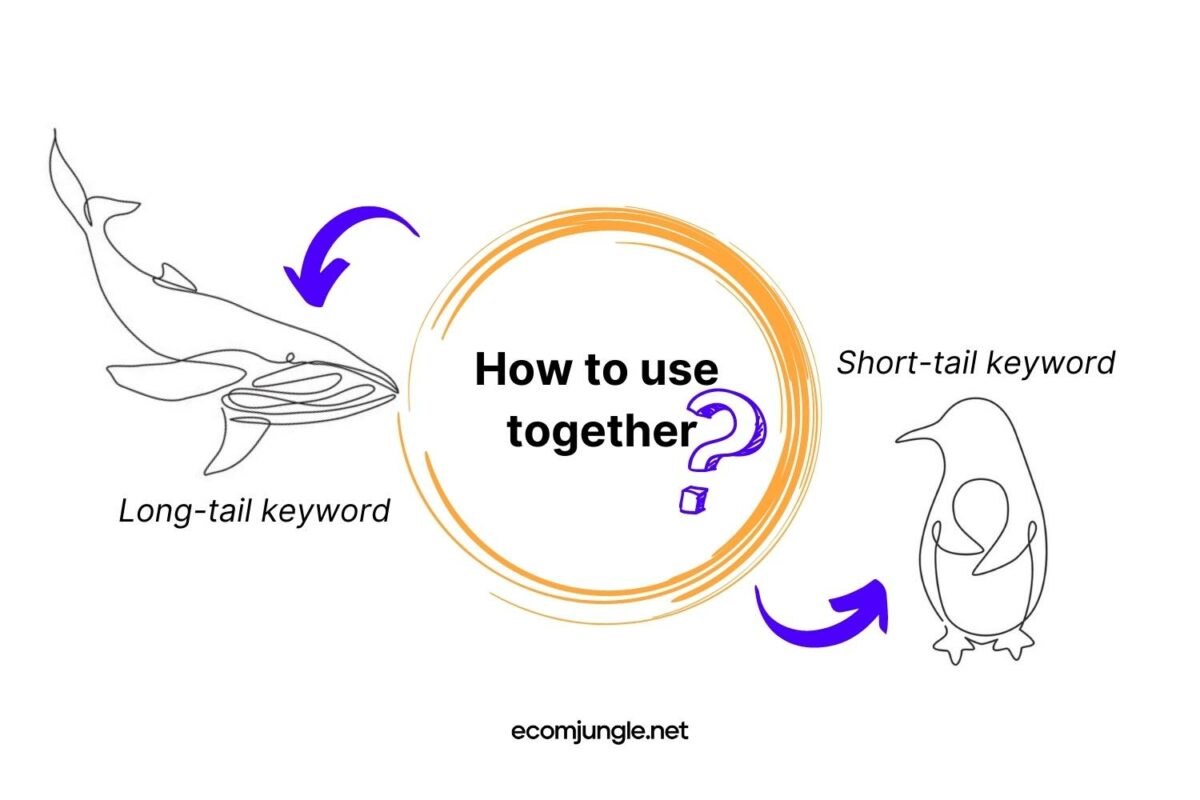
Conduct a keyword study for search engines
Once you have a clearer idea of the topics you want to work with, the next step is to create an initial list of the right keywords – the first step of keyword research. For this, you should use the best keyword research tools that allow obtaining a list of the keywords used by your competitor’s website.
Categorize the keyword research for each niche
Once you have the keywords metadata, you should start searching by niche to analyze the keyword performance. This way, you will discover the keywords that get traffic from search engines.
Use keyword filters
You will also find a “Keyword Difficulty” column, which measures the difficulty of competing (if you are starting) for the keyword you searched for. Finally, if you wish, you can take the search queries and use filters to find more specific search terms that are more relevant to your business. For example, they can be volume or even number of words per phrase.
Moreover, some tools also allow you to evaluate the keyword gap. This way, you can compare them between domains and find long-tail search queries. Finally, all these keywords can be exported so that you can create your list.
How to apply short-tail and long-tail keywords strategically
Fundamentally, the best method of driving your marketing strategy is to strike the right balance between short-tail and long-tail keywords. Achieve that balancing act between the two options, and you’ll engage a broader scope of early adopters while ensuring you get the lead traffic you seek.
For more keyword application ideas check my post on what to do after keyword research is done!
If you are a new business don’t be afraid to start with long-tail keywords
Within the digital marketing world, long-tail and short-tail SEO keywords play a role in your brand’s success. Therefore, if you would like your SEO campaign to succeed, you must incorporate both in your eCommerce keyword research.
Frequently Asked Questions
Long-tail keywords typically offer the opportunity to target internet searches more precisely, as well as to overcome different filters and improve the reach of the terms you are trying to position.
So, in the search for better brand positioning on the Internet, more conversions, and higher ROI in digital marketing campaigns, nothing is more effective than using long-tail keywords.
If you want to increase your organic search traffic and conversions faster (and with less effort), using long-tail keywords typically is the way to go.
While choosing the right long-tail keywords is not always easy, it doesn’t have to be overwhelming. However, if your brand has authority and your website has a lot of valuable content already ranked, you can include head terms to rank for these high-traffic keywords.
There are different approaches to choosing a keyword phrase for your posts or pages. You can choose to optimize your article for a short, generic keyword. These are the most common keywords that get a lot of search traffic. But they also have a lot of competition.
You can also choose to optimize for a longer, more specific keyword phrase, represented by the tail in the image above. These longer key phrases are also called long-tail key phrases. They get less search traffic than short-tail keywords but generally have a higher conversion value.
Google Ads calculates the Cost Per Click for each keyword based on its demand. Therefore, highly competitive terms with a high search volume will have an equally high CPC. It is a factor that you avoid with longer keywords.
Making use of terms with a lower level of competition and CPC means that you won’t have to pay a premium price to get your ads to rank well. As a side effect, this also frees up some of your budgets to focus on other paid advertising initiatives.
Keywords are used almost exclusively to determine relevance. If your website has many instances of the phrase “Chinese food restaurant” and a lot of content about terms related to Chinese food restaurants, it will probably be considered appropriate for a user search about Chinese food restaurants.
Conclusion
The most important thing about keywords in SEO is that they make it easier for users or potential customers to find valuable answers to their questions. In turn, a site optimized for relevant keywords will rank better in search engine results, which translates into more visits and higher sales.
For your brand to take advantage of this last element, you must know how to adapt the keywords based on the objectives of the SEO strategy you propose. In this way, words and plans will work together and bring the user not only to the answer he is looking for but also to your site and your products or services.
Thus, the key is to find the balance between the use of short-tail and long-tail keywords to get the organic traffic you are looking for. It will depend on the goals you set at the beginning. Finally, it would be best if you did thorough research on the keywords you would use in your content, whether short-tailed or long-tailed.
With all these recommendations, you can now find keywords that are not so much in demand, which can effectively position yourself. However, keep in mind that at the beginning, this is the most advisable because if you use very competitive keywords, it will be almost impossible to get a good position in the search engines.
Later on, when your company has more visibility and recognition from users, you can try other keywords. The idea is that little by little, you will climb up the ladder so that you are at the level of your competitors and position yourself in your industry.
